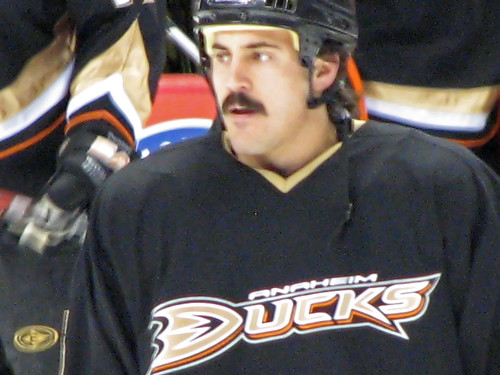Penguins Perspectives: It’s long past time for the NHL to get serious about player safety
Parros #Parros

Welcome to Penguins Perspectives, a weekly column by KDKA-TV Digital Producer Patrick Damp. Each Friday, Patrick will talk about the week that was, the week to come, what to watch for, and more.
PITTSBURGH (KDKA) – Hockey, by its nature, is a physical game. I’ve often described it as an artful chaos of motion.
It’s a sport known for its speed, brutality, and unpredictability.
It’s also a sport that, to this day, allows opponents to drop their gloves, throw hands, and then they (usually) get nothing more than a five-minute break in the penalty box for their troubles.
The sport is a glorious game, truly a team sport where it’s extremely rare for just one single player to affect the outcome.
However, it’s a sport that has its premier league stuck in a time long passed by.
When the Penguins returned to action on Tuesday night against the Winnipeg Jets, the second period saw forward Noel Acciari concussed on an extremely dangerous hit. Jets defenseman Brenden Dillon lined up Acciari just before the blue line and drove an elbow into Acciari’s head, causing his helmet to become dislodged. Acciari attempted to get up but was unable, falling back to his knees.
Correctly, Dillon was assessed a five-minute major for contact to the head, a match penalty, which disqualified him from the rest of the game.
One day later, he was suspended for three games by the NHL’s Department of Player Safety.
Once again, the NHL is falling woefully short when it comes to protecting its players.
No, Noel Acciari is not a star, but that should not matter.
Over the past 15 years, we’ve learned so much more about concussions, head trauma, CTE, and the effect all of those can have on former professional athletes as they attempt to live their lives away from the arena of competition.
Since 2017, the man leading the NHL’s Department of Player Safety is one George Parros. Parros spent nine years in the league with Anaheim, Los Angeles, Florida, Colorado, and Montreal. The Washington, Pennsylvania native made his living through his fists.
Parros is one of the last of the old guard, a man teams would employ for one reason and one reason only: to fight.
Now, on its face, it seems smart – who better to police the game from danger than a man who did just that when he was playing?
The problem is, if you give an outlaw a badge, they’re still an outlaw.
It’s human nature to have deference to people who have the same line of work that you once did. Sure, I don’t think Parros is sitting in his office in the NHL headquarters like a cartoon villain and laughing when he doesn’t suspend dangerous hits, but subconsciously, he likely has some sympathy for them and their work.
Before the inevitable “people want hockey to be soft now” comments begin, I want to point to what Penguins forward Jansen Harkins, no soft tissue player himself, had to say about Dillon’s hit.
“Hockey is a contact sport,” he told The Athletic’s Josh Yohe. “You should be able to finish your checks. No one is saying you shouldn’t. But you still have to be responsible for yourself and for others. I don’t think anybody liked that hit…anyone who saw that replay, it was ugly.”
Physicality will never leave the sport of hockey, in fact, I urge you this weekend to check out some Professional Women’s Hockey League games on YouTube. The brand-new women’s league does not allow checking, but tune into a game or two – they’re still finding ways to hit.
Hitting serves multiple purposes in hockey – separating man from puck, inflicting fatigue upon your opponent throughout the course of a 60-minute game or a seven-game series, and yes, intimidation.
The way the sport is played, hitting, and physicality will never be a thing of the past. It’s too important and too unique to the game.
What the NHL has on its hands is a problem.
Too many of the leading voices, both in media and in front offices, are from a time gone by, a time when it was believed that fighting and dirty play were deterrents to bad actors, but time and again, we’ve seen that theory of the case is false.
Matt Cooke spent a large portion of his career throwing dirty hits and hurting players and no amount of enforcers and big men stopped him from doing it.
What caused Cooke to clean up his act, at least for a while, was a lengthy suspension that saw him sitting out the remainder of a season.
Tom Wilson, Jacob Trouba, and others continue to leave injuries in their wake, and no matter how many times they get jumped or suspended for 2-3 games, it hasn’t begun to sink in that they will not stop.
For the NHL to truly show they care about player safety and the well-being of its players, it won’t be a 6’5″ 250-pound bruiser to do it.
It will take the NHL getting serious about punishing players who throw hits to the head and issuing suspensions and fines that act more as a deterrent than a slap on the wrists.
More from CBS News